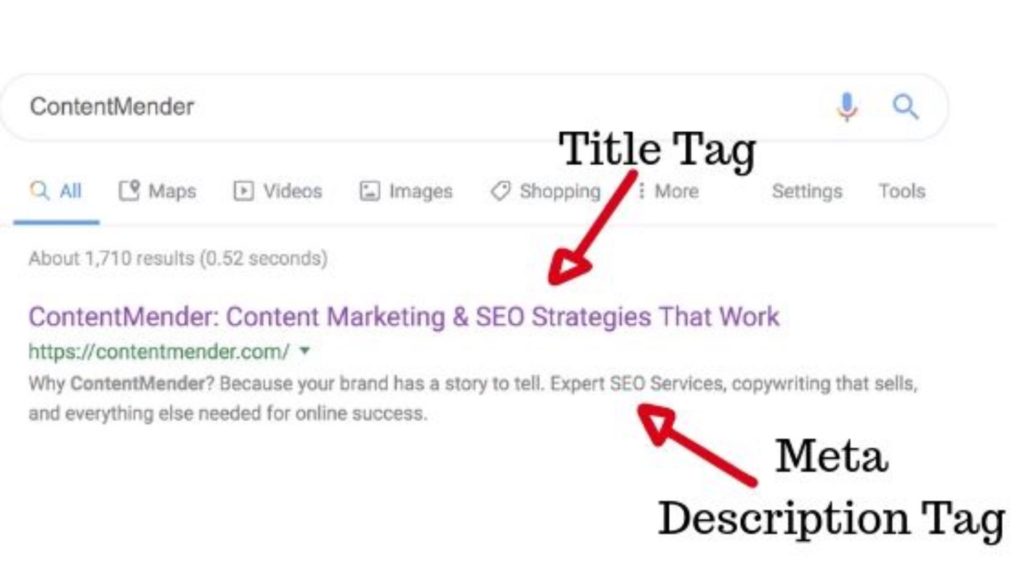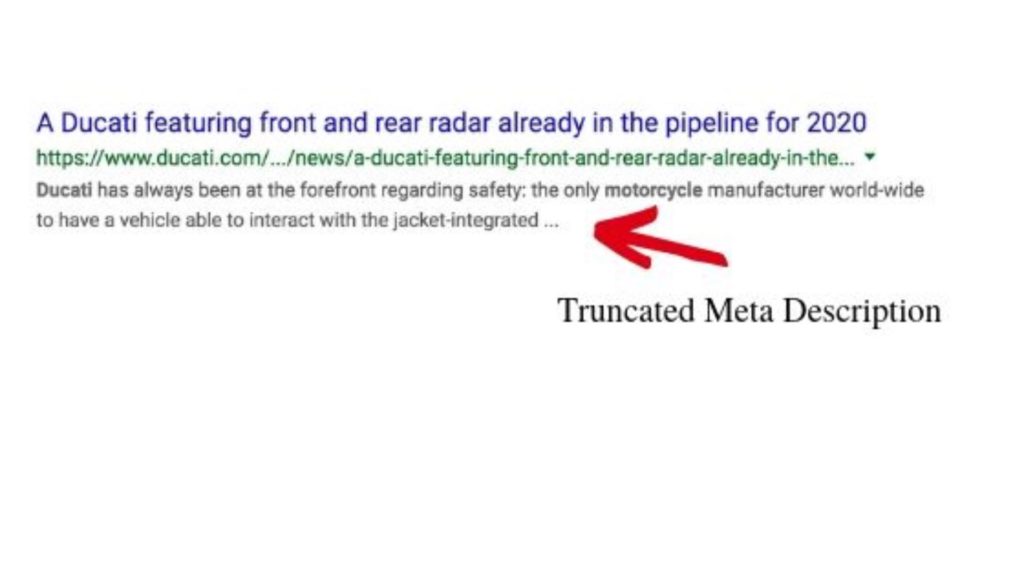You can’t talk SEO without talking about meta descriptions. These short, 160-character snippets are not visible on the actual webpage but are shown within the search results because search engine bots can read them in the HTML code of your website’s header section
But what exactly are they, and, more importantly, how do you write ones that will increase click-through rates?
What are Meta Descriptions?
Meta descriptions are a simple and succinct snippet of text that defines what your webpage is all about. It’s a short description added in the HTML code of the webpage that explains what the page is about.
But first, you must understand a notion that once baffled SEO professionals – Google does not consider the meta descriptions as a ranking factor. In a statement in 2009, the search giant admitted:
“Even though we sometimes use the description meta tag for the snippets we show, we still don’t use the description meta tag in our ranking.”
Strange, right? Reputable SEOs will do whatever it takes to boost the ranking of maximum webpages. But if Google does not care, why spend so much time on drafting meta descriptions? It’s all basically a pitch to quickly explain what the page is about, and why it is important.
These descriptions:
- Let the google crawlers and the users know what they can expect from the webpage. In fact, this content fragment even appears when the pages are shared on social media accounts. It’s like a catchy promo before someone visits the webpage.
- Are useful and captivating to promote your products or services.
- Engaging and SEO-friendly meta descriptions receive more clicks. It means the meta descriptions are enticing enough to grab the eyeballs and hits on the webpage. Though meta description wouldn’t matter to SERPs ranking, having higher click-through rate (CTR) sends a positive sign to Google that the webpage is offering something valuable to the users.
In fact, as per an article published in 2012 from Dr. Pete Meyers of Moz, Google uses two metrics in search ranking: search engine results page (SERP) click-through rate; and (2) dwell time.
He Stated: “The first metric I think Google makes broad use of is direct Click-Through Rate (CTR) from the SERPs themselves. Whether or not a result gets clicked on is one of Google’s and Bing’s first clues about whether any given result is a good match to a query. We know Google and Bing both have this data, because they directly report it to us”.
A relevant result gets more natural traction – CTR and dwelling too.
- Add value to the bigger rich snippets. Meta descriptions in conjunction with your rich snippets improve search engine results. For instance, product ratings, reviews, images, links, icons, etc add more value to your optimized metas and vice versa.
How do you Write Meta Descriptions?
Anyone with fundamental knowledge of content writing can craft catchy meta descriptions that are SEO friendly.
However, that does not happen always. In fact, you can find poorly drafted meta descriptions across the internet.
Remember, search engines at their discretion determine the most viable option for meta descriptions. By default, it picks a content snippet from your webpage if a meta description is not added in the HTML code. You can override that by crafting far more useful yet enticing meta description for your web page.

Instead of crafting a cookie cutter meta description that every other company would create, get creative.
Following are nine simple steps to write killer meta descriptions:
- Grammatically Correct: Grammar errors are a big no. Be unique to pique the interest of the users. No duplicate metas. Double check before posting.
- Purposeful: Make the meta description descriptive enough that it conveys the relevant information. Give a clear sketch of your web page. No flowery stuff to brag about products/services. Remember – you aren’t writing for yourself but to help users.
- Compelling: Powerful meta descriptions hit the right chord with the users in the first look itself. Use an active voice. Make the right (or persuasive) choice of words that drive prompt response to your Don’t bore readers with irrelevant details or technical jargon.
- Do Not Chase Character Count: Possibly the biggest challenge drafting meta descriptions is to wrap it in limited characters. Notably, the length of meta descriptions – like a meta title tag – is determined by the pixel size of the search results display screen. Currently, Google says the characters should be limited to:
-
- Title Tag: 60 characters
- Meta Descriptions: 160 characters
Of course, you can go +/- 5 characters if that makes sense. In the worst possible scenario, if you exceed the character limit, the meta description will appear like this:

- Keywords Matter: Yes – we said meta descriptions are not a ranking factor for search engines. But they can enhance click-throughs by attracting attention. All keywords typed into a search engine will be bolded in the meta description; this can attract the eye and influence a click. Just don’t stuff them with keywords. Most will disregard those spammy posts.
- Call to Action: A CTA is not mandatory, but if it provides direction or guidance to the user.
- Do Not Attempt To Outdo Search Engines: Google penalizes unethical practices. Do not concoct things that do not exist. No bogus or fake information to lure users.
- Special Metas For Social Media Platforms: Up the ante and add some tweaks to create special metas for your social media pages such as Facebook and Twitter.
Concluding Thoughts
Meta descriptions may not make significant change your SERP ranking, but inadvertently cause a ripple effect in your overall SEO practices. Well-crafted meta descriptions are a huge asset to impress the users, even if Google does not care.
Writing a lousy copy stuffed with keywords can quickly deter any chance of a click-through to your page. Even if that page’s content is the best in the world, a lousy meta description can dilute any chance of getting a new reader to that page, and a possible share by that user across.
Use creative writing and create powerful meta descriptions that hold true to your business intent, engages users, and soar up your digital performance.




